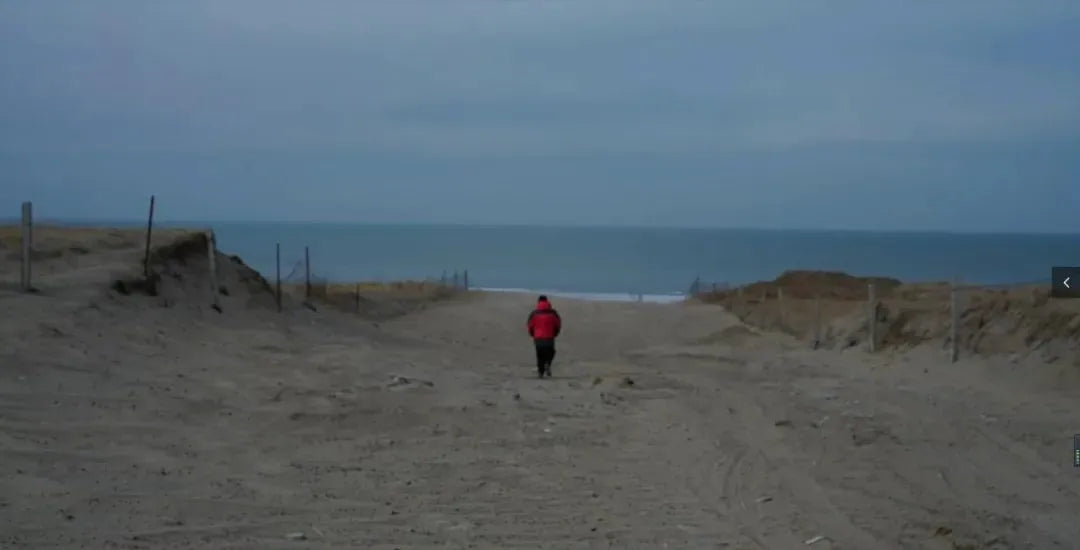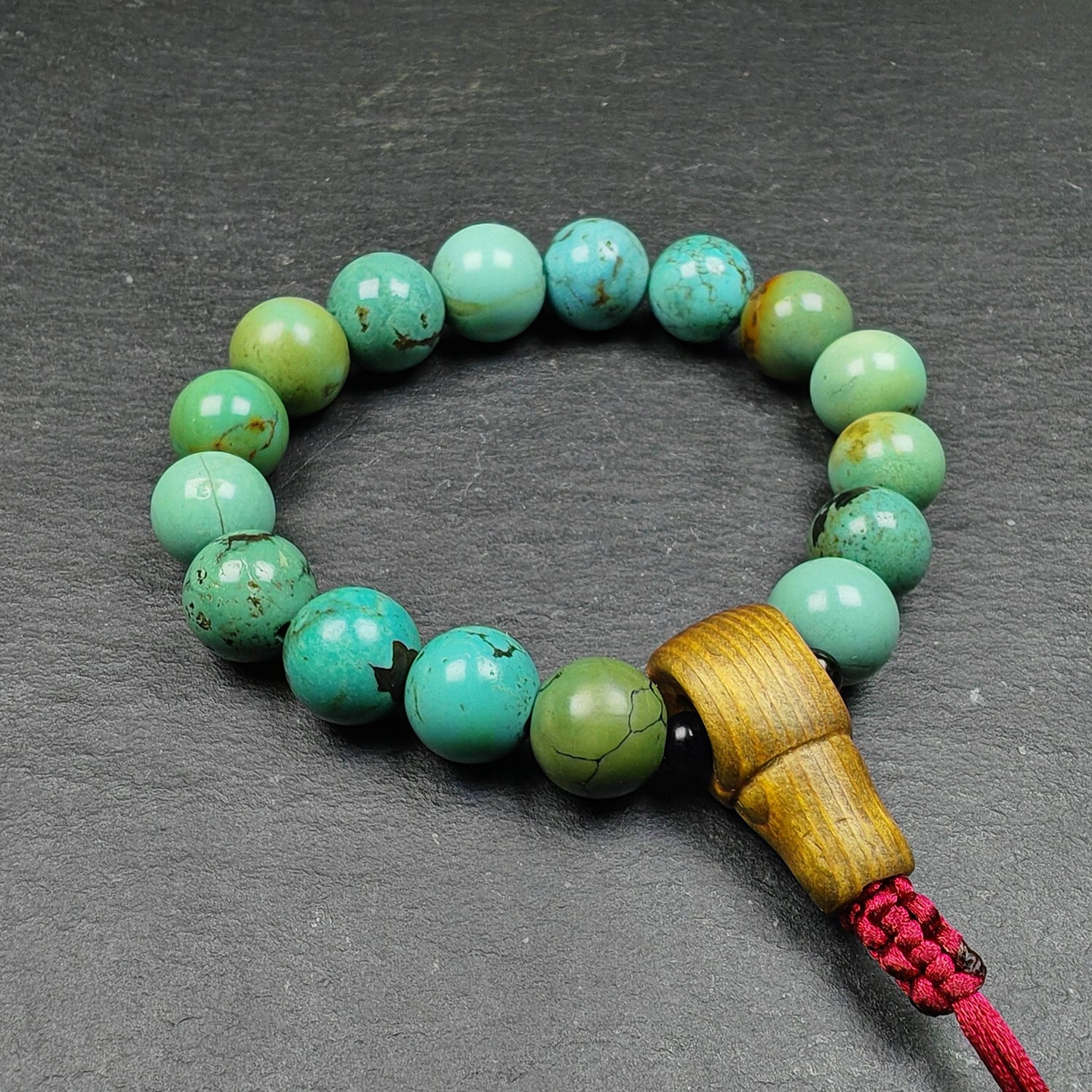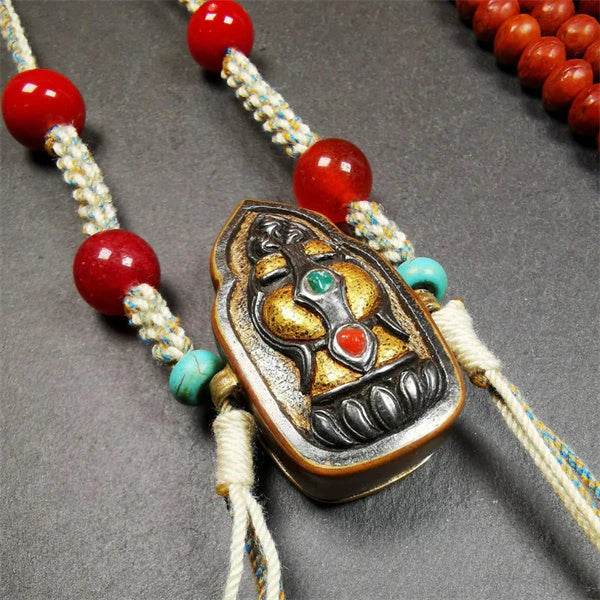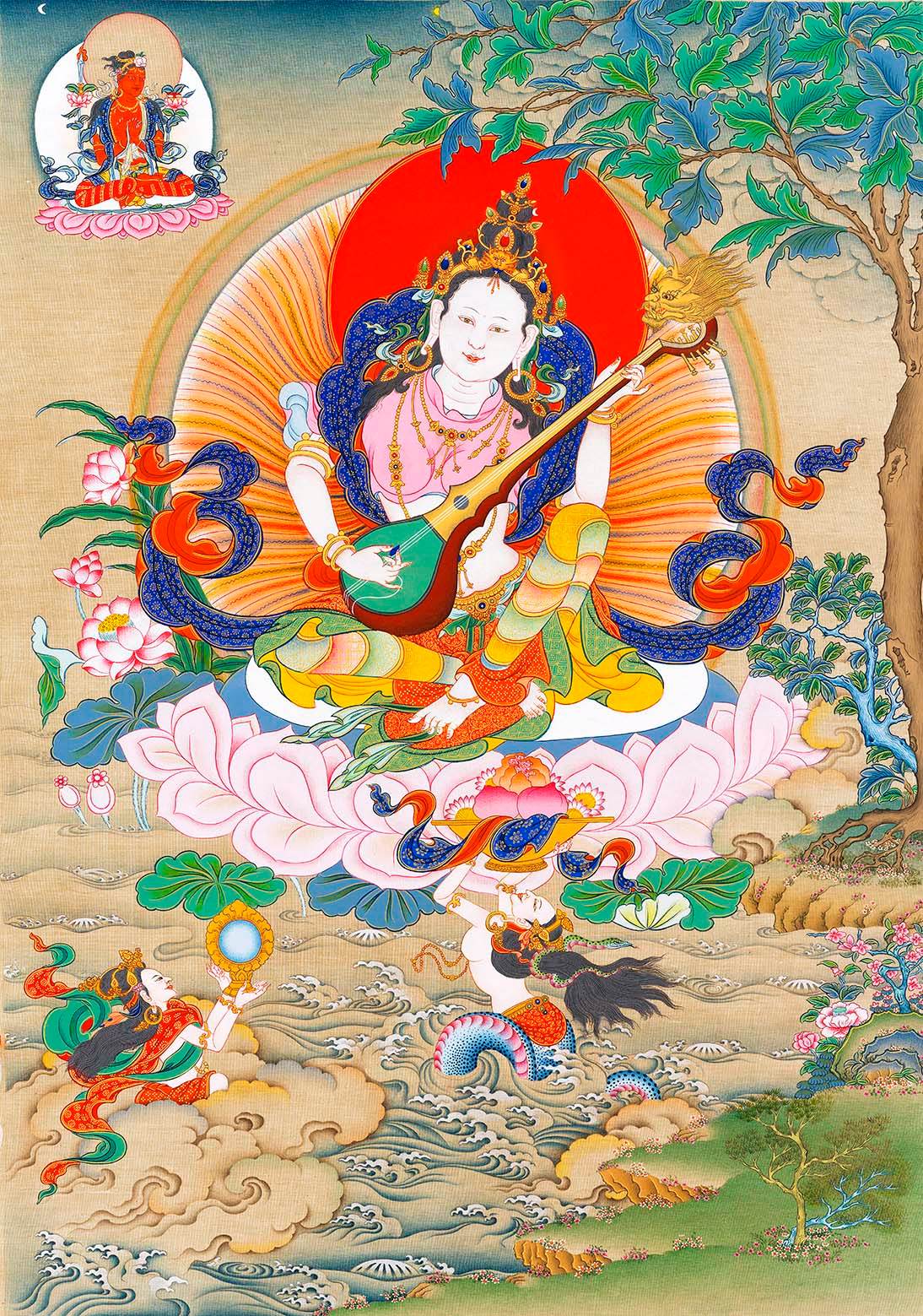
The Purpose of Travel ▎A Beginner's Guide for the "New Generation" of Pilgrims

Himalayan Pilgrims, 1909
©Wikimedia Commons
For the people of Tibet and its pastoral regions,
journeys are often pilgrimages made
to experience the spiritual joy of religion.
A pilgrimage, by definition,
is a religious devotee's journey to sacred sites.

Pilgrims from the Kham region
©Thomas L. Kelly
Pilgrimage to Lhasa
Many of my life's journeys were pilgrimages made with family—some memories remain vivid, while others happened before I could remember.

The most adventurous journey in my family's stories happened when I was one year old—my parents and grandmother took me on a pilgrimage to Lhasa. Along the way, I suffered severe altitude sickness and a bad cold, nearly losing my life.
On the night we arrived in Lhasa, my father carried me on his back, crying as he dragged my mother through the streets searching for a hospital. Having lived their entire lives in Amdo, it was their first time in Lhasa, where the Ü-Tsang dialect was spoken. They were lost, struggling to communicate.
Just as they were losing hope, thinking I would "depart this life in Lhasa," they met a *Böpa* (a Tibetan from Ü-Tsang) who spoke fluent Amdo Tibetan. Learning of our situation, he immediately found a pedicab and rushed us to the emergency ward of Lhasa City Hospital—saving my life.

Recovered in Lhasa
Later, whenever recounting our pilgrimage to Lhasa, my family would never tire of telling the story of how a stranger saved me there. If every pilgrim family has their travelogue, my rescue remains the most unforgettable chapter.
Of course, beyond this journey to Lhasa, my family and I embarked on countless other pilgrimages—our footsteps tracing sacred sites across Qinghai, Sichuan, Gansu, and Tibet. With each passing year, every journey left behind its own unique memories and experiences.

Pilgrimage to Lhasa ©Steve McCurry

©Frederic J.Brown
Night Visit to Saizong Temple
In Tibet, there is a tradition of circumambulating mountains in the Year of the Horse and lakes in the Year of the Sheep. In my memory, during these years, people would rent buses and travel in groups for pilgrimage.
Some scholars categorize pilgrims into two groups—ascetic pilgrims and pragmatic pilgrims—based on differences in the devoutness of their behavior, as well as the influence of certain underlying external consistencies and subtle mutual identifications.

Pilgrimage on Foot
©Google
Ascetic pilgrims are those who journey from their hometowns to sacred sites on foot or by performing full-body prostrations. Pragmatic pilgrims, on the other hand, refer to groups that utilize modern transportation and have relatively flexible daily needs. From this perspective, families with elderly and young children in my hometown mostly belong to the pragmatic pilgrim group.
In 2003, the Tibetan Water Sheep Year, I was roughly in preschool, with fragmented memories and a budding self-awareness. The experience of that year’s lake pilgrimage remains unforgettable to this day.

"Life," © Chunjian
The creator believes the meaning of the lake pilgrimage lies in revering all life connected to the lake.
I rented a bus with my grandmother and relatives from our village to make the pilgrimage around Qinghai Lake, while my mother stayed home to tend to our family's and relatives' livestock.
Perhaps because it was my first journey apart from my mother, I felt sullen the entire way due to separation anxiety, carsickness, frostbitten feet, and the tight sash of my Tibetan robe squeezing my waist—all these trivial discomforts weighed on me.
Though it was a lake pilgrimage, every monastery and sacred site within the lake's vicinity had to be visited without exception. Thus, the entire journey became a cycle of riding the bus, arriving at a monastery, disembarking to pray, then boarding again—repeated over several days and nights. For a rather inexperienced pilgrim, it could be considered a somewhat challenging trip.
On the night before we reached Qinghai Lake, the driver, unable to resist the elders' persistent persuasion, took us to Saizong Temple in Xinghai County—a site usually visited only in the Year of the Monkey. By the time we arrived at the monastery, it was already late at night.

Saizong Temple
© China Tibetan Net
However, considering the driver's schedule requiring an early departure the next day, everyone decided to circle the monastery and traverse the mountain path in the dark. Given the steep and perilous nature of Saizong Temple's pilgrimage route, the elderly rested at a lodge at the mountain's base, while the younger ones set out to circumambulate. The children were free to choose for themselves.
But my grandmother suggested I represent our family by making the mountain pilgrimage for blessings. Unable to decline such an "important" task, I joined my relatives from the bus to begin the circuit. By the time we reached the halfway point, it was already deep into the night.

Tibetan Women Praying at Sacred Lake, Tibet
©Thomas L.Kelly
"Mirror of Yama"
The male relatives accompanying me were explaining how Guru Rinpoche subdued demons at this sacred site and buried them beneath the mountain; how the devout elder "Ganbu" from our A'ri tribe prayed with such fervent full-body prostrations that Guru Rinpoche manifested on the stone surface, asking him to stop; and even spoke of the Mirror of Yama and the Iron Mortar of Hell.

Yama
©Google
Perhaps because a child's imagination is too vivid, the more thrilling the stories my relatives told, the more terrified I became. My steps grew stiff, and my mind filled with images of demons baring bloody fangs.
At one point, the relative holding my hand sensed my fear—a lack of pious devotion—and let go, suggesting I walk faster on my own. Too proud to beg her to hold my hand again, I complied.
But I truly couldn’t go on. My leather boots and Tibetan robe felt like they weighed over ten pounds, growing heavier with each step. Soon, I fell to the back of the group, faintly hearing someone mention "demons" again. My heart pounded, and my legs turned weak.
Then, in a moment of carelessness, I slipped and tumbled onto a dirt mound by the path. As I flailed in panic, a large hand grabbed mine—likely a stranger from another pilgrim group, their accent unfamiliar to us.

Pilgrims of Mount Kailash
©Thomas L.Kelly
To be honest—though it may sound laughable—the moment that hand pulled me up, I burst into silent, hysterical tears. Afraid my trembling voice would betray me, I simply didn’t answer the kind stranger’s questions.
I clutched their hand desperately, matching their every step. Only when my emotions settled slightly did I remember my grandmother’s request to pray for blessings.
Perhaps too young to grasp the meaning behind such devout pilgrimage, that night, with unprecedented sincerity, I prayed: May all the merits of this journey be transferred to this stranger.

©Ps gulati
After surviving that harrowing night, we arrived the next day at Chixiu Jiamu Basin—Qinghai Lake, the largest inland lake in China. Though a lake, it carries a hint of the sea.
I don’t know where most people’s boundless imagination of the ocean comes from, but mine stems from the movie *Titanic*.
I have a cousin who adores Hong Kong films. Every time she came down from the summer pastures to stock up on supplies, she’d take me to a small-town video parlor to watch movies.

"Once Upon a Time in Northeast China"
©Google
When business was good, the video parlor would be packed with people—construction workers, miners, shop owners, and herders stocking up on supplies. The space was cramped and dimly lit. The men chain-smoked one cigarette after another, filling the narrow, noisy room with a haze of smoke and the mingled scents of sweat and tobacco.
The owner had several CD cases, each unzipped to reveal stacks of pirated discs, mostly Hong Kong crime films. But one day, he played the dubbed version of *Titanic*. At the time, my Mandarin was limited, and I couldn’t follow the plot. Yet guessing the story from the visuals alone was its own kind of fun.
Unlike the usual crime movies, that day, when the prelude of *My Heart Will Go On* began and the sunset over the North Atlantic shimmered on the screen, I was struck by an indescribable beauty.

"Titanic"
©Google
Sunset is perhaps nature's most beautiful filter. The ocean, lakes, grasslands, deserts—anything bathed in its glow becomes indescribably gorgeous.
I was likely the least qualified pilgrim in our group. When I first arrived at Qinghai Lake at sunset to pay homage, I forgot to prostrate or sprinkle blessed water.
In my mind, I merged the Atlantic Ocean with Qinghai Lake, placed the Titanic on its waters, and even imagined a horse galloping along the shore, racing the ship.
Just as my imagination ran wild, my grandmother interrupted my thoughts and urged me to hurry to the incense altar to prostrate. This, perhaps, is the difference between a seasoned pilgrim and a naive one: To adults, Qinghai Lake is the holiest shrine of sacred worship, while to me, it was a lake that held both identities at once.

"Winter at Qinghai Lake", © Chunjian
The bitter winter winds make this view belong not to tourists.
Sacred Lake
After completing the entire ritual, we strolled around the lake. Only after my grandmother haggled at length with a lakeside vendor was I able to take a photo with Qinghai Lake.

By Qinghai Lake
Perhaps because of this pilgrimage memory, or because of what she means to our community, I’ve since found myself unconsciously drawn to every image of Qinghai Lake.
Yet the works I’m drawn to are mostly those captured by those who know her intimately—far removed from the vibrant, emerald hues often seen through outsiders’ lenses.
It seems only those familiar with her can capture that unique essence: the salty, rugged texture that exists beyond her sacred aura.


"Kora, The Pilgrimage" © Chunjian

"Kora, The Pilgrimage" © Chunjian
For pilgrims, Qinghai Lake itself—along with the mountains and waters of the Chixiu Jiamu Basin, the herders tending sheep along its shores, the gravel-strewn ridges, and all the meaning it carries—ultimately forms a complete Sacred Lake.
But for those who live by the lake, Qinghai Lake and what it symbolizes are simply woven into the fabric of daily life. They are born here, and they die here.
As novice pilgrims like me grow into "new" pilgrims along the journey, we also encounter the people and landscapes of this place. Circling the lake, we learn to revere all life that thrives upon its shores.

"Riding Horses" © Chunjian
Herdsmen tending horses by the lake in winter

"Basketball Court" © Chunjian
Monks at the lakeside monastery
Integrate pilgrimage into daily life
With a devout heart
To journey, to grow, to refine
Perhaps this too is another form of trekking

"Wind Horse" © Chunjian
Sheet-metal prayer flags installed on sand dunes






